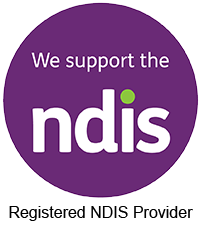Stuttering is a speech disorder that causes interruptions in the rhythm or flow of speech.
These interruptions may include repeated sounds (c-c-can), syllables (da-da-daddy), words (and-and-and) or phrases (I want-I want-I want). Repetitions might happen once (b-ball, can-can) or multiple times (I-I-I-I-I want, m-m-m-m-m-m-mummy). Stuttering may also include prolongations, where sounds or parts of the word are stretched out (caaaaan I go) and blocks. Blocks are often silent and are seen when it looks like the person is stuck, trying to speak with no sound coming out. There are often secondary behaviours which accompany stuttering. These may be verbal and include grunts, small non-speech sounds, filler words (um/er) or pauses. They can also be non-verbal like grimacing, blinking or body movements.


